There’s a pivotal moment in Blade Runner 2049 that reveals the film’s unfortunate flaw.
When the scene begins, you’re pretty sure at least one of the characters isn’t going to make it out alive. It’s a scene that should have everyone in the theater on the edge of their seats. And, in my showing at least, there were audible gasps and winces at all the right moments.
But I knew the film was in trouble as soon as this scene ended, because that’s when the guy in front of me pulled out his phone and started texting.
To be clear, he wasn’t just returning a message; he was actively scrolling through multiple pages of apps to find something else to do. Then he opened Facebook and paged through it for awhile. He commented on a few posts. He explored a few profiles. He even opened up another app to create a meme that he saved and posted as a response to another conversation in different thread.
He did all of this during what should be the riveting third act of a movie.
Worse, he wasn’t alone. While I didn’t see a lot of other people around me texting, I did see probably 25% of the audience getting up, going to the bathroom, getting drink refills, etc. It felt less like a roomful of people watching a movie and more like a stadium of people watching a baseball game they weren’t sure would ever end.
All of this reveals a structural flaw in the film:
Blade Runner 2049 has a serious pacing problem that kills its momentum.
To be clear, this doesn’t mean it’s a bad movie. It explores major questions about the meaning of existence (as this Wisecrack video helps explain), and it deserves some time and space to build its case.
Unfortunately, Blade Runner 2049 doesn’t make efficient use of that time. Due to some questionable pacing choices, the film loses its momentum around the midpoint, which results in a restless audience.
But it didn’t have to be this way.
Let’s talk about plot vs. pacing, and how a story’s momentum can make the difference between the audience being at the edge of its seat or the limits of its patience.
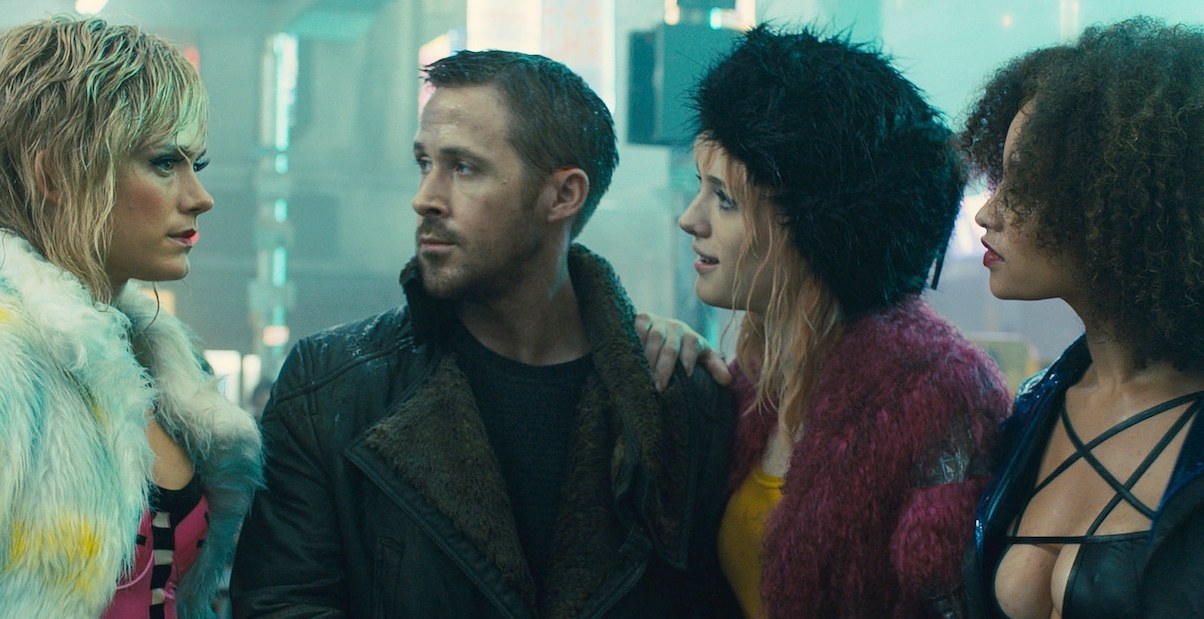
#liveauthentic
What We Mean When We Talk About Pacing
There are three kinds of pacing or momentum that affect how we process any story:
- How fast the action is moving
- How quickly information is being revealed
- The inherent feel of story’s scene-to-scene rhythm
How fast the action is moving is the most tangible factor in a film’s pace.
For example, Mad Max: Fury Road is a cavalcade of high-octane scenes with life-or-death stakes, so it always feels like it’s moving at top speed because it is. But you can have fast-paced action even in a “slower” genre. Whit Stillman’s Metropolitan and Kevin Smith’s Clerks are both fast-paced comedies in which characters talk briskly and tensions rise even though the literal pace of their days seems to be (intentionally) dragging.
How quickly information is being revealed affects our cognitive response to a story.
The more information we have to juggle in rapid succession, the faster the story will feel regardless of whether it’s a superhero adventure or a simmering romance. Jane Austen’s books (and films) often feel like sprints because new information is revealed in every scene that changes our perceptions of (and predictions for) where the characters’ relationships are headed. The Big Short and Moneyball are books (and films) about statistics, but their setups and payoffs more closely resemble the structure of suspense thrillers. And Grey’s Anatomy packs the long-tail narrative arc of a soap opera into a “case of the week” medical drama, which means every episode is moving fast on two different tracks.
A story’s scene-to-scene rhythm ultimately has the most impact on our estimation of a story’s pacing, because it’s a rhythm we can feel.
In movies and TV, this rhythm is partly determined by editing. Long scenes and uninterrupted takes create a different audience expectation than swift montages and rapid cuts do. In books, this rhythm is established by chapter length. For example, Dan Brown’s novels usually have short chapters built around cliffhangers. And because his style became a blueprint for bestsellers, anything longer now feels like a slog to readers who’ve grown accustomed to Brown’s breathless pace.
As a general rule, the longer a scene is allowed to run, the more attention a director expects the audience is willing to invest in that moment. And Blade Runner 2049 is full of scenes that
Take.
Their.
Time.
Which, in itself, is not a bad thing — especially in an atmospheric sci-fi mystery where the locations are as integral to the story’s theme as its plot twists.
But a viewer’s investment in what’s happening onscreen relies on two factors:
- how much the audience cares about what’s happening
- the audience’s own internal story clock
How much we care about what’s happening depends on whether we’ve received all the information we need to accurately forecast what might go wrong for characters we want to see succeed. This is primarily a function of the plot, although we won’t care about the plot if we don’t care about the characters it’s happening to.
But the biggest structural challenge any film has is anchoring the audience within its own ticking clock.
When you’re reading a novel, you always know how far you are from the end because you’re holding it in your hand. You can see how many pages are left.
When you’re watching a TV show, you always know how far you are from the next 30-minute mark or the next commercial break. Its pace is built into its format.
But when you’re sitting in a theater watching a movie (or a play), you really have no idea how long you’ve been sitting there, or how much longer you have to go. That’s why audiences crave the familiar signposts of three-act structure: you want to compare your progress through this story to all the other stories you’ve seen like it before, so you know what to expect next.
If you’re watching a mystery, you presume the end will come shortly after the detective solves the crime.
If you’re watching an action adventure, you presume the end will come shortly after the villain has been defeated.
If you’re watching a comedy or a drama, you presume the end will come shortly after the main character’s core conflict has been resolved.
We consume stories so we can see tensions established and resolved. But when the resolution of that tension doesn’t end the story, we feel adrift.
This is why, when there’s a big twist or a genre break midway through a film, it can unmoor us from where we think we are in the story. And while that can be narratively thrilling, it also disrupts our internal clock, which can affect our ability to remain emotionally invested (or to pay attention).
For example, if a detective solves the crime only an hour into the movie, now we’re wondering: “What else is left? What else matters? What other parts of the story must we now realize are the truly important parts?” This surprise in the face of our expectations forces us to recontextualize everything else we’ve just seen. Now we must try to intuit what the real end state or win condition of this story could possibly be.
And when we’re in that state of mind, we get unmoored from the timestamps that we thought the plot was anchoring us to.
(This is also why we feel a bit unmoored when we’re watching something on Netflix. Since we can start and stop a show at our leisure, anytime within any hour, it’s natural to press that pause button and figure out exactly where we are from time to time. Otherwise, “just one more episode” turns into “four more hours.”)
All of which brings us back to Blade Runner 2049.
******** SPOILERS AHEAD FOR BLADE RUNNER 2049 ********
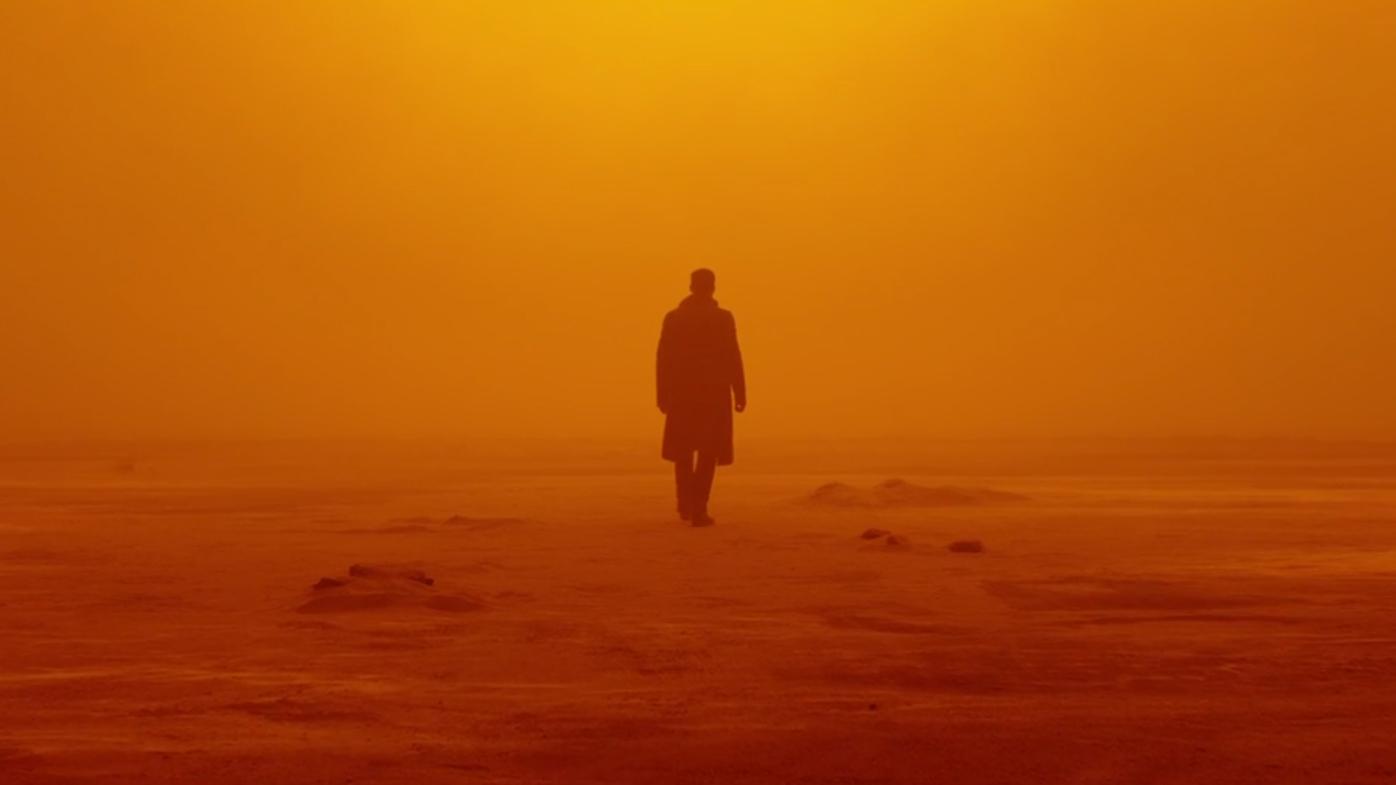
Ryan Gosling, searching for the end of this movie…
Where Blade Runner 2049 Goes Wrong
The film opens with a text block that brings us up to speed on the world of 2049. I suppose it’s a necessary tactic to bring any new viewers who never saw the original film up to speed. (It may feel clunky, but it’s still better than a voiceover.)
We’re introduced to this world of technopocalyptic Southern California. We meet Ryan Golsing’s blade runner, K, on his way to retire a replicant. And by the end of the opening scene, we know three facts:
- K is a newer-model replicant
- The replicant he retires refers to “having seen a miracle”
- There’s a mystery box buried under a tree outside the replicant’s home
If you want to bet that the box relates to the miracle, and the miracle relates to K, then congratulations, you have everything you need to understand the remainder of the story.
Once it’s dug up, it’s revealed to contain the bones of a dead woman… who died from childbirth… and who was a replicant… but that’s impossible, because replicants can’t have kids… so this indicates an anomaly… which changes K’s mission.
This all happens in the same scene.
As pacing goes, this is the opposite of slow. In fact, it’s almost too much information happening too quickly. We’ve just barely gotten accustomed to the film’s world before we’re suddenly informed that this revelation could change the world as we know it. We haven’t invested enough in how things are now to know whether this would be a good thing or a bad thing. We don’t yet know who we’re rooting for, much less what everyone wants. (In fact, we haven’t even met the villains yet. As such, do we even need villains?)
The filmmakers seem to know this, because they switch courses. After giving us too much information up front, they then ration the release of new information and the pace at which it affects the story, all while hoping we’ll overlook one glaring meta-problem.
I’ll get to that meta-problem in a second. But first, let’s look at why the switch in pacing disrupts the audience’s expectations.
At first, based only on what we’re told onscreen, we believe that we’re watching a story about a human who’s hunting old replicants. Then we learn that we’re actually watching a newer replicant hunting older replicants, which changes our expectations of what the film is about.
Then we learn there’s a mystery box, which obviously becomes our new focal point.
That mystery box is immediately solved, which creates a new mystery (who was in it, and where did her child go), which again changes our expectations of what the film is about. We now believe solving this mystery is the story’s point.
Well, we find out who the woman was in the next scene. Now we just need to find her child.
Well, we find out the child’s birthdate in the next scene. And we find out that the birthdate corresponds to a memory implanted in K. So… did we just solve this mystery in the first half of the movie?
Not so fast. The film then takes about 45 minutes to… yup, to confirm that we do know what we thought we knew. And if that’s the case, then the only next step is that K must go on the run in order to prevent himself from getting retired.
… so, of course, he stops to have sex, sleep in, and make coffee.
I’ll reiterate: the lead character just confirmed the suspicion that he (and we) spent an hour haboring, which proves he’s in immediate life-or-death danger… and he stops to have sex, sleep in, and make coffee.
When characters make choices that directly conflict with their own stated objectives, we have more than a pacing problem. But I digress, because the next scene is the point when the guy in front of me pulled out his phone, and that’s when the film’s pace dropped off a cliff.
Why?
Because we finally addressed the meta-problem I mentioned earlier.
Only now, in the film’s last act, does K finally meet up with Harrison Ford’s Deckard.
This, in itself, isn’t a problem based solely on what we’ve been told onscreen.
But.
This film was sold to us with Harrison Ford in the marketing materials. His appearance in the film isn’t a surprise; it’s a known quantity. His appearance is an inevitability that every viewer is waiting to see from the moment the film begins. As such, we can’t help but measure every choice K makes against the obvious one: why aren’t you finding Harrison Ford, who must have the answers you’re looking for?
It’s the modern version of Chekhov’s gun: if you’re going to put Harrison Ford in the trailer, you can bet his involvement is crucial to the outcome of the story.
So when K finally does get around to seeing Deckard, we’re treated to…
uh…
the longest, most drawn-out character reintroduction in modern cinema history?
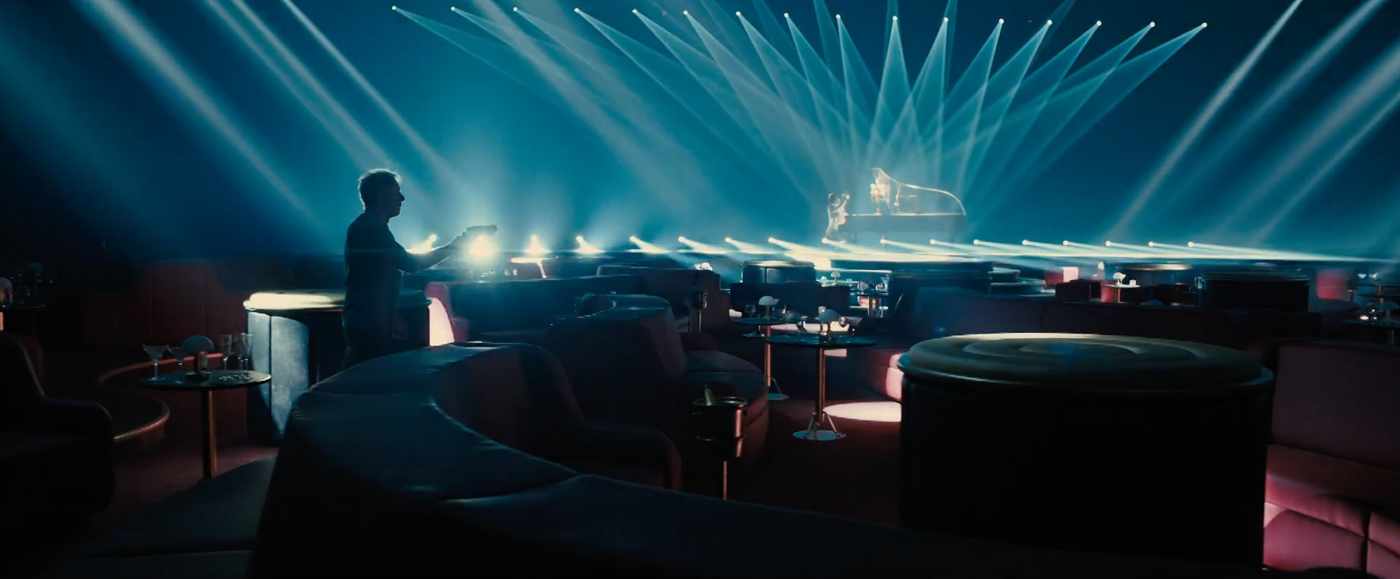
Even the Liberace hologram saw this moment coming an hour ago.
I need to be clear here: when they meet, Deckard asks K what he wants, and K tells him that he wants to ask him some questions. Instead, they stalk / shoot / fight / stand down / buddy up for about 10-15 minutes. And when that sequence is over, Deckard asks K what he wants, and K says he wants to ask him some questions.
It’s like the last 15 minutes didn’t even need to happen, but they knew they needed an FX setpiece to eat up some clock.
And this is why my showing had dudes repeatedly getting up to use the restroom: the audience had lost faith that this story was leading us toward a satisfying ending. It took our attention for granted. Even worse, viewers realized they could leave the theater for 5 minutes at a time and not miss anything.
Sadly, all of this could have been avoided.
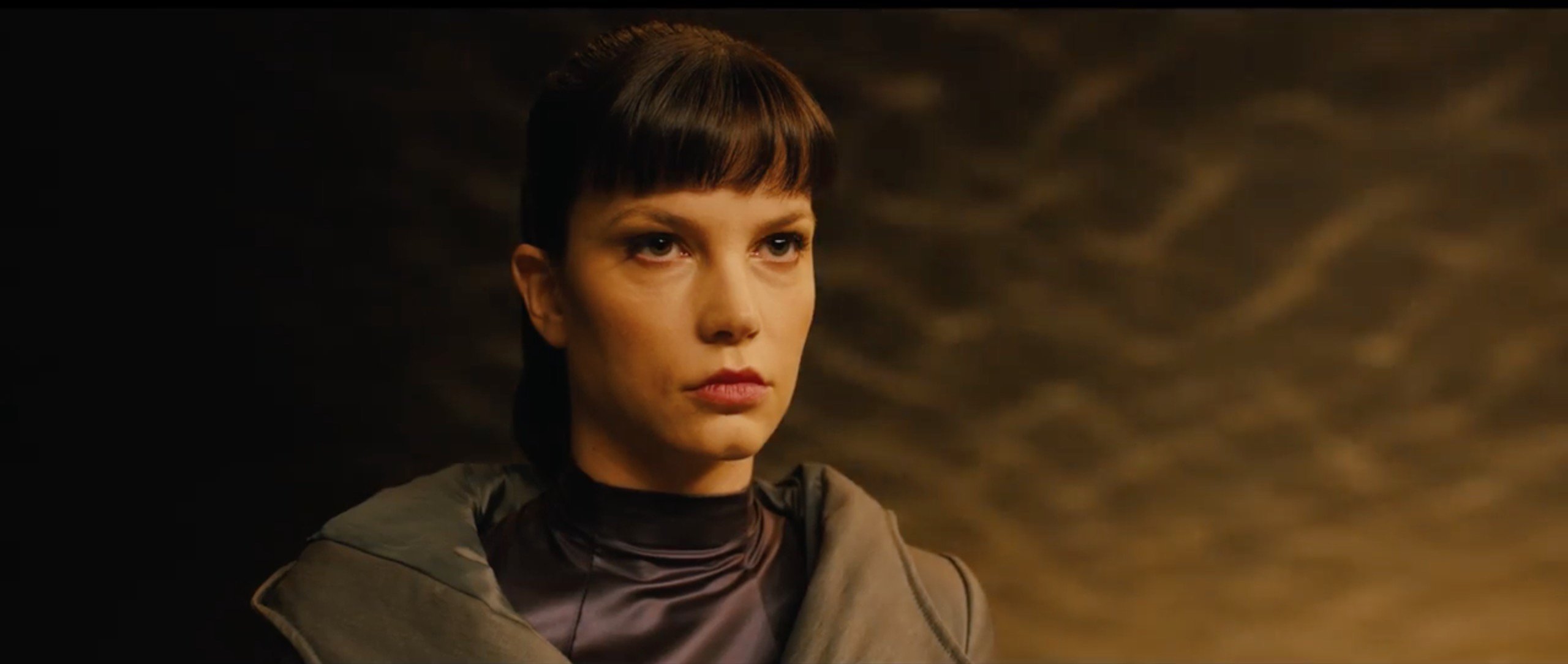
Wait… you’re saying we could have fixed this?
One Change That Could Have Saved 2049’s Pace
At its core, Blade Runner 2049 is a sci-fi mystery. That means it’s trapped between two genres, so it has to satisfy the expectations of both: it has to deliver a mystery that keeps us guessing until the very end while also justifying the complexity of its themes.
And it almost succeeds.
The story does build to a twist. There is a payoff. And it does solve the mystery while questioning its central thesis — in this case, what it means to be “alive.”
But one simple change could have prevented it from losing its momentum:
Deckard should have been reintroduced in the film’s opening scene.
This would have solved the meta-problem by eliminating an interminable wait for the “reveal” we knew was coming all along. But it also would have recontextualized the rest of the information in the film by reordering it.
As it is, K’s story is fairly linear. From the time he notices the mystery box until the end of the movie, we’re only shown two flashbacks: when K remembers his childhood, and when Deckard remembers Rachael. Everything else happens pretty much as K discovers it.
This is a problem because our suspicions about the story are usually on pace with, or even one step ahead of, K. Thus, instead of revealing new information, we’re frequently confirming our own suspicions. This unfortunately makes K seem bad at his job, and it makes the mystery seem more obvious than it should.
But by rearranging the story’s information, we could have been kept in a constant state of trying to play catch-up, rather than waiting for the inevitable.
Three simple examples of how this rearrangement could have paid off:
If we’d opened with K finding Deckard, we’d have to wonder “why is he looking for him” and “what do they both want?”
If we’d opened with K looking for Rachael, we’d have to wonder “why is he looking for her” and “what does he know that the Wallace Corporation doesn’t?”
If we’d opened with K searching the orphanage for evidence of the child’s existence and freezing up by the furnace as his memory is triggered, we’d have to wonder “who is he looking for” and “what does his memory have to do with the mystery?”
Instead, we’re both hand-held and told to wait while we watch characters come to the same conclusions we’re already expecting. This makes it hard to buy into the alleged stakes. (And that’s even before a man on the run stops to have sex and make coffee.)
Blade Runner 2049 is definitely worth seeing. But it’s also a useful lesson in why storytellers need to bend time and pace in order stay one step ahead of their audience.
If You Liked This Post
… then you may also like this post about why the Justice League movie fell short at the box office, or this post about the story flaw in Ingrid Goes West.
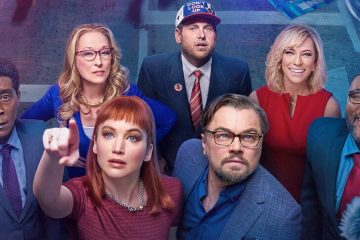

17 Comments
Tim Shean · September 17, 2020 at 2:11 am
I really hate that what you consider a flaw and lay at the feet of the film instead of some people with pathetic attention spans, without a second thought. Ford filming in Monument Valley and Lean filming in the Desert actually…took a moment to…Savor…the experience of seeing something that the Audience has never seen. A moment to absorb the foreground, the mid ground, the distance….to Experience the World the film is bringing you to. Especially when you pretend to understand that not All movies have to be Roller Coasters.
The Difference is systemic. Whether you watch old Film Noir, or many of the great films of the 50s,60s,70s…or listen to the Music of those eras, the Artists…Brought us along on the journey with them to see and hear what we hadn’t seen or heard before…mainly to think thoughts we hadn’t thought before, ..The ultimate challenge to us from great Art. Expectations from the Roller Coaster Era of Films is fine for Rollercoaster movies, but it’s the Wrong Yardstick to use on this film.
Justin · September 17, 2020 at 7:44 am
Some films use languorous pacing to their advantage, and their audiences stick with them because their attention has been earned by characters and conflicts that drew them in. But if an audience hasn’t bought in — or if they’re already thinking several steps ahead of the characters — then that slow and deliberate pacing can backfire. Showing an audience something they haven’t seen before can be incredibly powerful, but it only works if the audience actually cares.
Mark · May 7, 2020 at 9:26 am
Bladerunner 2049 brilliantly artistic but please employ an editor! Way too long and slow The original way better but a creditable attempt Why are French directors invariably allowed so much license ? Editors quick!!
Rob · February 17, 2020 at 9:59 am
The thing that bugged me when I finally got around to watching the film was the angle that K was the child. This made zero sense as he’s owned by the police who would have bought him from somewhere. Surely they wouldn’t take any old replicant that walks in off the streets.
lorq · May 19, 2018 at 10:14 am
I really enjoy structural analyses like this. They’re always fascinating.
BUT: I feel that this analysis misidentifies what the true center of the story is, and (thus) where the climax of the story is.
The story isn’t about the question of “When are we going to meet Harrison Ford” or “When is it going to occur to K that he needs to find Harrison Ford,” but rather it’s about K discovering the true meaning of his own memory. The whole “sleuth / whodunit / mystery” aspect of the narrative centers on K’s evolving understanding of this memory. (His proactive investigation of the memory — outside the parameters of the case he’s supposed to be investigating — finally lands him in a desperate circumstance where finding Ford is what he *has* to do to solve *his own* problem. But his problem is the memory. The central dramatic question of the story is always “What’s up with that memory, and what does it mean *to K*?”)
When the true meaning of the memory is finally revealed, not only is it a twist that undercuts the theory K has been operating under throughout the film, and which the audience has been encouraged to believe throughout (so we’re *not* ahead of K in that regard), but — more importantly — it comes *after* he has encountered Ford and subsequently been separated from him. (The big reveal is essentially private to K; Ford’s character never learns about it. In fact, Ford’s character never learns about *any* of K’s private drama.) K’s story continues forward *after* he encounters Ford; his moments of greatest crisis come *after* all that.
Apropos of three-act structure: the encounter with Ford happens in the climax to Act Two, *not* Act Three. The analysis above treats the encounter with Ford as if it’s part of the big Act Three finish, when in fact there’s still a whole act left to go.
As the article itself suggests, the movie’s advertising, which played up the Harrison Ford angle, may have distorted expectations here. But watching the movie *without* the advertising in mind, the central dramatic question is always clearly about K’s memory.
Personally, one of the things I *liked* about the movie was that it wasn’t predicated on the audience being heavily invested in Ford’s character. Ford is just a piece of the puzzle *for K*. It’s K’s story both before and after Ford shows up.
Justin Nobbs · April 23, 2018 at 12:20 am
That’s a very good analysis. I’m a big fan of Bladerunner but the pact of the film is axactly how you explain it. There are exceptional scenes, then there are long drawn out filler spaces.
I was glued with the opening scene, flying across the solar cells and food production areas, because this starts to show us the world and the terrain. I love these landscape parts of the film. The next major landscape clip shows the spinner crossing the city slums on it’s journey to the downtown area. This sequence was good but could have been much better and longer. I would have liked to have seen more detail of the cityscape. There was also not really a need to make it quite as dark as it was. Certainly it needed to be dim and dull, but not quite as it was.
I felt that there were better city flyovers in the first Bladerunner and even the city itself was more convincing. As far as i know, this concept city is supposed to inhabit over 100 Million people and most of them seemed without power in 2049. All the suburbs were in blackout.
I also did not see a need for the strange threesome scene. I felt that the most powerful role was that of Sylvia Hoek. Her role was awesome. Maybe Ridley Scott should have made 2049.
M-Dawg · October 29, 2017 at 12:19 am
There *is* a problem with the villains. Wallace comes across not as some tortured genius but as a complete psychopath. Luv (while I personally liked the character) had a terrible case of James Bond villain syndrome, killing everyone she’s sent to kill in seconds yet leaving the hero for dead not once, but twice (and we’ll leave unanswered why she forgets she’s got switchblades as K kills her in a way that takes well over a minute).
sesioncinefila · October 17, 2017 at 7:11 am
What you say is very nice, but what if the story has to develop like this, because Deckard’s daughter has a “linear” weight in what happens on the screen ?.
Justin · October 17, 2017 at 11:36 am
True, the plot point involving Deckard’s daughter does need a setup and a payoff. But there are many possible ways to deliver that information, including shifting the chronological order by which it’s revealed.
For example, if all the filmmakers did was move the “K meets Deckard” sequence to the beginning of the film and then cut from Deckard finally asking K “why are you here / what do you want” to the opening scene that actually begins the current film, just that rearrangement would establish the film’s theme / tone up front and THEN drop us into the mystery [which we know is leading us to Deckard]. As it is, K seeking out Deckard at the end of the second act feels like something K’s only doing because he has no other options. To me, that order of events contradicts what we ultimately realize is the film’s functional purpose (continuing Deckard’s story) while also making K seem like an incidental character in his own film (although, ultimately, I guess you could argue that IS the film’s whole point: though we each think we’re the hero, we’re simultaneously all just background characters in someone else’s story).
Tbag · October 16, 2017 at 5:21 pm
Great analysis. For me the breaking point in the movie was Deckard’s meeting with Wallace. Two people sitting in chair’s within a setting we’d already seen plenty of beforehand. And the dialogue seemed forced with grandeur. Boring.
Justin · October 16, 2017 at 5:47 pm
Good point. Wallace was ineffective, and his surrogate, Luv, got stuck in stereotypical “supervillain fight mode” in the end, which was a letdown after her more nuanced earlier scenes. It really felt like this movie needed a different kind of third act in order to honor its themes without descending into “stock showdown sequence.”
Professor66 · October 14, 2017 at 1:37 pm
This article is exactly how I felt about Bladerunner 2049 and I have been bickering with others that proclaim it’s the greatest SiFi movie ever. A good movie but not the best, drawn out to long in my eyes.
Justin · October 14, 2017 at 2:07 pm
Thanks, Prof. I guess that’s what makes it so frustrating: it’s so close to being great, but it holds itself back. It feels like a potentially interesting movie that got warped into a blockbuster structure, and I think audiences can tell that frame is wrong for it.
Rose Quayle · October 8, 2017 at 12:53 pm
Very nice article. I’m a big Blade Runner fan so will be seeing it soon but really appreciate the breakdown in pacing. Well written.
Justin · October 8, 2017 at 1:05 pm
Thanks, Rose. It’s a good film, and I hope you enjoy it. I just think they may have played it a little safe because they underestimated the audience’s ability to keep up.
Blade Runner 2049: Philosophy of Humanity, Identity, and Existence · August 24, 2023 at 5:56 am
[…] Kownacki, J. (2017). The Problem with Blade Runner 2049. Justin Kownacki. […]
Anonymous · October 17, 2017 at 10:51 am
[…] […]